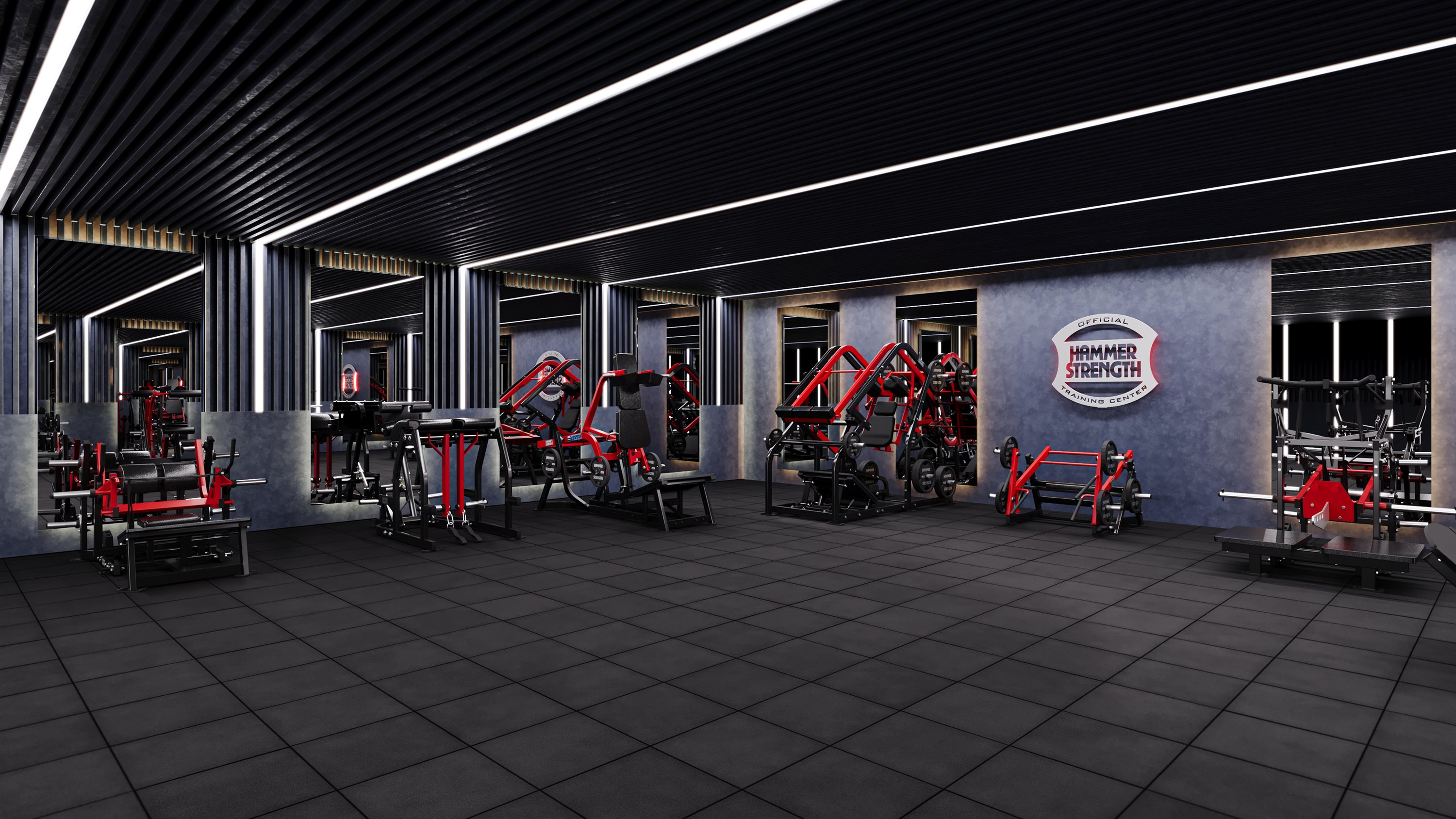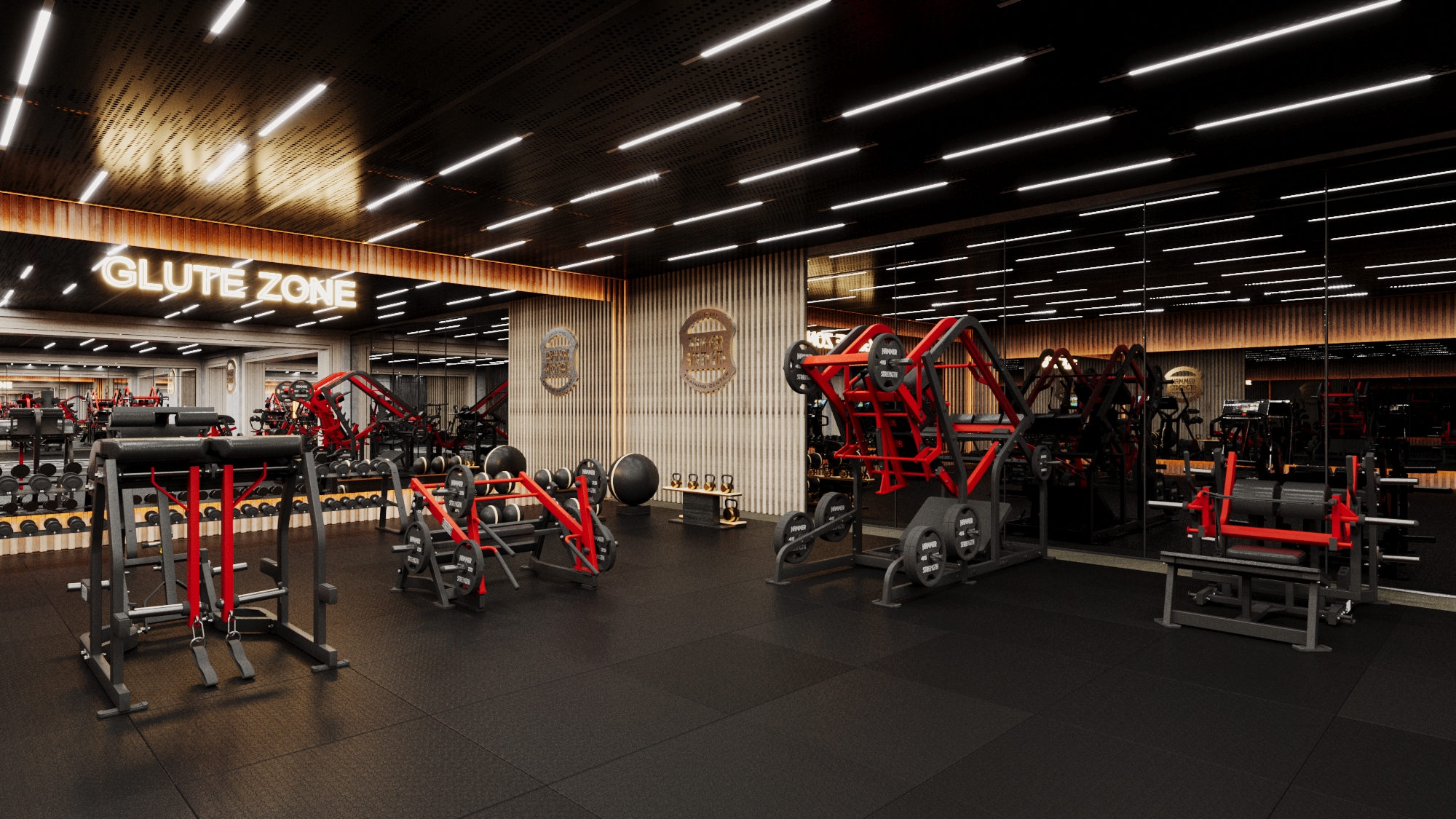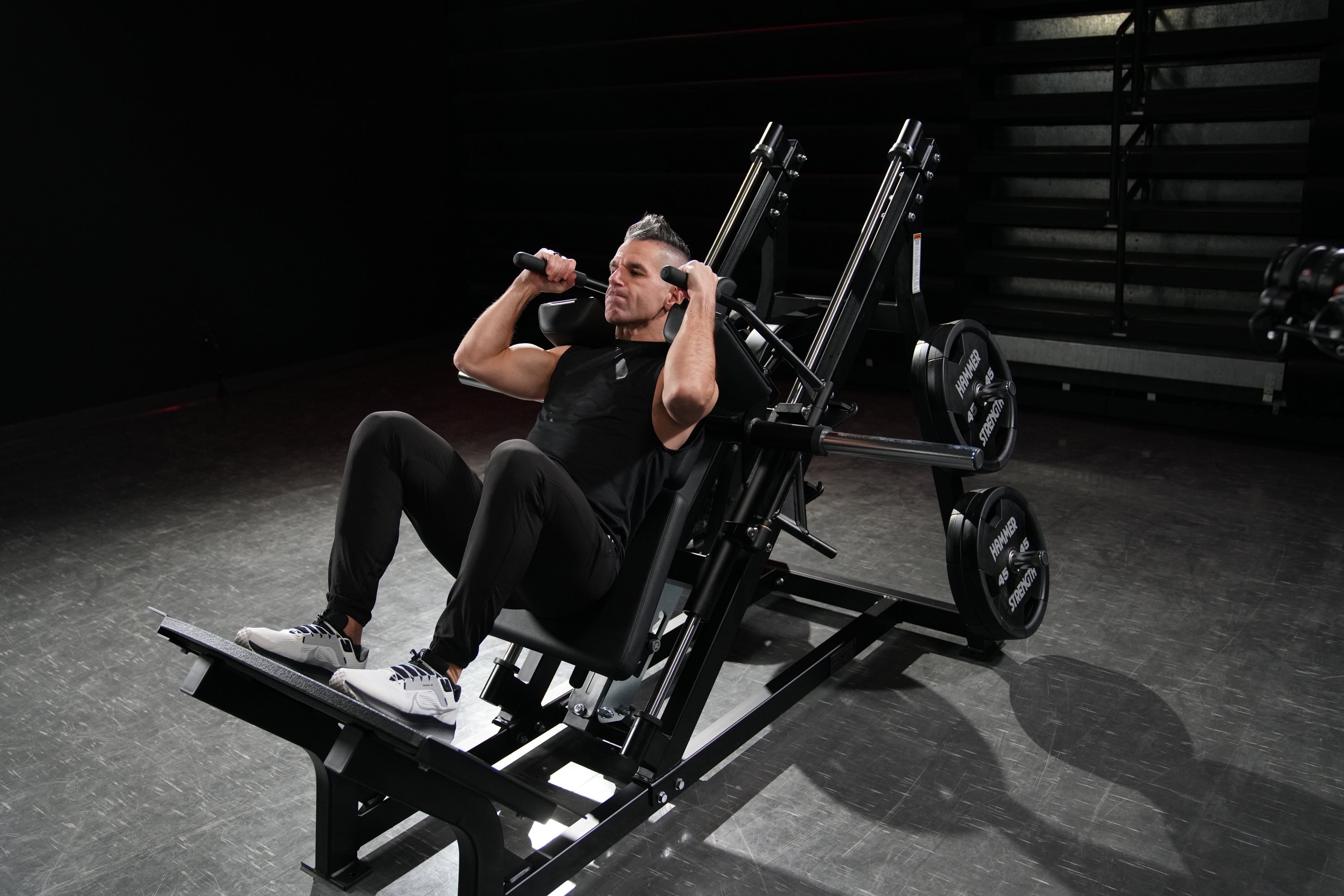Compare the Hammer Strength Plate-Loaded Pendulum-X to traditional pendulum squat machines. View the comparison chart to discover how patent-pending resistance and full-body extension deliver next-level leg power and athletic performance.
What to Consider When Designing a Plate Loaded Circuit
Strength training has become a primary driver of engagement, pushing operators to rethink how space, equipment, and programming align with rising expectations. A well-designed plate loaded circuit can deliver throughput, efficient floor use, and a training experience that reinforces your brand’s identity.
Here’s how to build a circuit that works as hard as you do.
1. Align Equipment Strategy with Operational Goals
A plate loaded circuit is more than a lineup of machines. It is a system for driving efficiency, retention, and brand impact. When designing yours, focus on:
- Member flow and throughput: Circuits should cut downtime and avoid congestion while keeping efficiency intact. Plate loaded equipment, with natural movement and fast load adjustments, keeps members working, not waiting.
- Space efficiency: Pod equipment to maximize footprint without sacrificing comfort. Pairing an Iso-Lateral Row with an Iso-Lateral Front Lat Pulldown, for example, provides balance when going through a circuit.
- Operational simplicity: A clear circuit layout reduces the need for supervision, guiding members through effective workouts with minimal staff involvement.
"For every push, there's a pull. If you have a chest press, make sure you have a row nearby. For a shoulder press, pair it with a lat pulldown. Balanced training is key for members and reinforces strong design principles in your facility." - Josh Johanson, Product Marketing Manager, Hammer Strength
2. Optimize Layout for Flow, Efficiency, and Safety
Placement defines experience. Nail it, and your circuit runs smoothly at peak hours.
- Podding strategies: Group complementary machines into pods that streamline movement and reduce bottlenecks.
- Pro Tip: Hammer Strength Plate Loaded is built for podding; you can also opt to place many of our products back-to-back with little to no interference. Our team can recommend pairings that match your space and goals.
- Live area management: Maintain clear zones for safe loading, unloading, and easy access in and out of stations.
- Traffic flow: Position circuits to avoid crossover with cardio, free weights, or functional zones. In tight spaces, this detail makes the difference between order and chaos.

3. Position Strength as a Differentiator
A plate loaded circuit is not only efficient, but also a brand statement. Facilities that showcase strength training stand apart.
- Evidence-backed credibility: According to recent studies, strength improves performance, health, and longevity. Centering it in your facility reinforces your reputation as serious about results.
- Market differentiation: Premium plate loaded circuits demonstrate intent. They signal a commitment to performance, smart layouts, and a facility culture built around strength.

4. Maximize ROI Through Intelligent Selection
Circuits should deliver returns as well as results.
- Member retention: Equipment that is simple and feels right keeps people coming back. A better training experience fuels loyalty and referrals.
- Cost efficiency: High-throughput circuits mean less staff oversight and more members training at once. Efficiency equals capacity.
- Programming versatility: Circuits adapt to full-body, lower-body, or high-intensity formats without requiring endless additional equipment.

5. Innovate to Stay Ahead
Strength training is never static, and neither should your circuit be.
- Track trends and usage: Stay close to coaches, athletes, and influencers. Their insights shape smarter upgrades.
- Refresh without renovation: Podding and modular designs let you reconfigure as training needs evolve. For example, many customers choose to pod the Hammer Strength Plate Loaded Tibia Dorsi-Flexion with the Plate Loaded Seated Calf Raise.
- Leverage the tactile edge: Hammer Strength Plate Loaded equipment is engineered for superior feel. Movement quality does more than produce results. It builds loyalty and raises perceived value.
"Don't forget the importance of ‘feel’ for your customers. Many machines look good, but with Hammer Strength, we put intense effort into design to make it feel right. Members notice this difference and come back for it." - Josh Johanson
Key Takeaways for Facility Operators
- Circuit design is a strategic asset: Not just a workout format, use it to improve flow, maximize efficiency, and enhance brand perception.
- Podding and layout planning are critical: Optimize space and member experience with well-organized product pods and convenient weight trees that hold ample plates.
- Strength-focused circuits differentiate your facility: Support retention and reinforce your marketing story.
- Operational efficiency drives ROI: High throughput, minimal downtime, and modular configurations reduce staff burden and improve satisfaction.
- Invest in equipment that prioritizes feel and biomechanics: Ensure members enjoy the experience and return regularly.
- Continuously adapt and innovate: Leverage member feedback, trends, and modular design to future-proof your circuit.
By treating plate loaded circuits as strategy, not just setup, you turn a standard strength zone into a signature feature that fuels engagement, delivers results, and reinforces the toughness of your brand.





